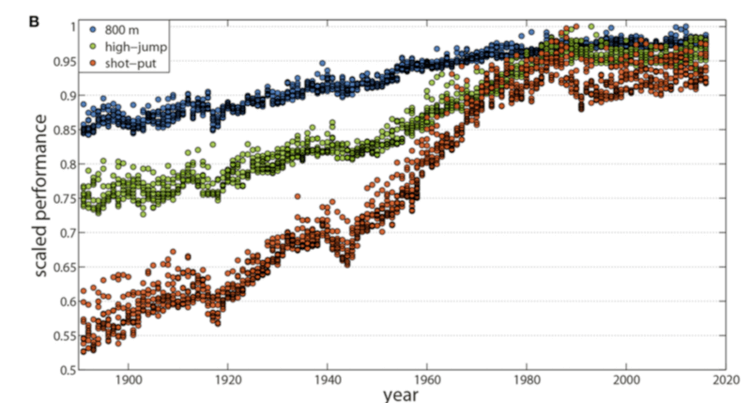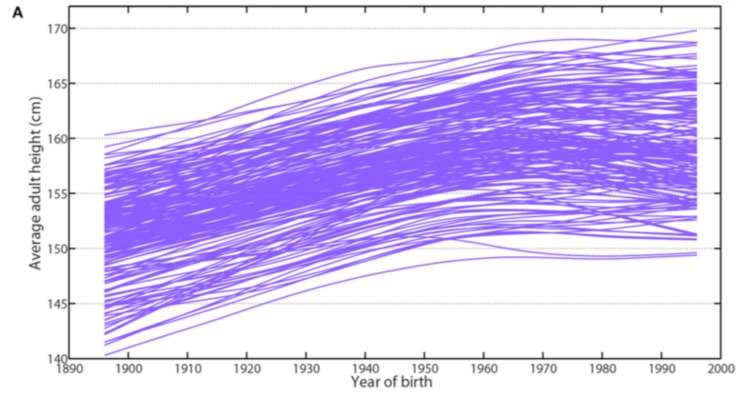Yet at the dawn of the 21st century, humanity’s growth has noticeably slowed, and the change seems to be a trend, not an anomaly. Much to the dismay of fanciful futurists like Ray Kurzweil, who envision humans living 200 years or more, our species shows no signs of pressing forward to new biological heights without serious technological intervention. Instead, we are plateauing.
Last year, in the journal Frontiers in Physiology, Adrien Marck and a team of researchers at the Institute of Biomedical Research and Epidemiology of Sport in France, laid out a strong case that humanity may be nearing its biological limits.
“It is now possible to ascertain the biological limits of the human species, through sport records, lifespan, or height,” they wrote. “These traits no longer increase, despite further continuous nutritional, medical, and scientific progress. This suggests that modern societies have allowed our species to reach its limits. We are the first generation to become aware of these limitations.”
Marck and his colleagues made those limitations plain to see. Performance in fundamental sporting events is leveling off, as depicted in the graph below, showing the ten best performances in track and field’s 800-meter sprint, high-jump, and shot-put for each year.
Moreover, humans are no longer growing any taller, as seen in the figure below showing average adult height for each country over time.
These data do not evince a species pushing forward to new physiological heights, but a species inching closer to potentially unbreakable biological limitations. Transhumanist endeavors in the realms of robotics, human augmentation, and cybernetics may allow us to transcend them, but at the cost of our own humanity.
Though Homo sapiens may have reached a plateau, Marck and his colleagues believe there is still much work to be done to ensure that every human being has the opportunity to reach their full potential.
Knowing limits of the human species indicates clear goals for any nation; states should govern in such a way that human size, lifespan, and physical performance increase in order to reach their highest values for most people. When plateaus are reached, care should then be taken to prevent regression even if remaining close to the upper limits may become more costly. This aim will be one of the most intense challenges of this century, especially with the new pressure of anthropocenic activities responsible for deleterious effects on both humans, environment and health. However, solutions may be found and collective actions may taken to restrain this pressure and, in an optimistic way, maintain the possibility of reaching and remaining at the upper limits.
Ross Pomeroy is Chief Editor of Real Clear Science and a zoologist and conservation biologist by training. Follow him on Twitter @SteRoPo.
This article was originally published at Real Clear Science as We Are Reaching the Biological Limits of Humanity. Now What? and has been republished here with permission.

































